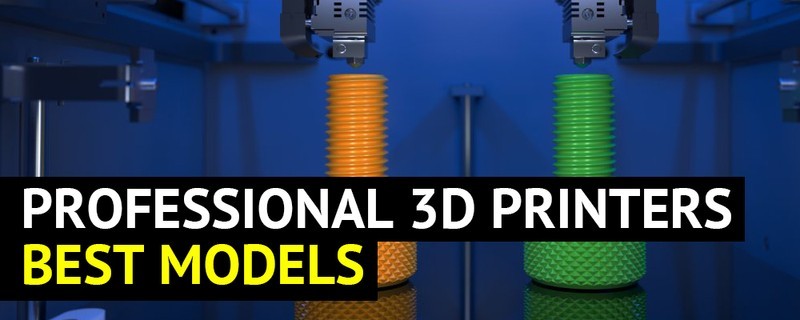
Since the appearance of 3D printing in the 1980s, the technology has come a long way to become highly appreciated by professionals. First created for rapid prototyping, 3D printers proved useful in quite a number of fields, from heavy machinery to the beauty industry, not only for making prototypes, but also for consumer goods batch production, and much more. Due to high-speed and relatively low-cost production, alongside the ability to create accurate models with extremely complex designs, the popularity of 3D printing is growing rapidly.

Credit: audi-mediacenter.com
This is Top 3D Shop, and in this article we are going to tell you about 3D printers for professional use. We’ll discuss what to look for while choosing a professional device, and provide you with the list of best models to make your choice easier. Read on to learn more.
When one plans on purchasing a 3D printer, the first question to answer is what the device is going to be used for. Based on your particular needs, you can complete a list of requirements, and that will serve you in making a decision. Further on we are going to discuss some key points to help you with the list.
In 2021 International Organization for Standardization (ISO) published the ISO/ASTM 52900:2021 standard determining the terms used in additive manufacturing. This document establishes the following seven categories describing the process of 3D printing:
Each of the processes listed above is the basis for different 3D printing technologies, with three of them being the most common for today. They are vat photopolymerization, which includes SLA, DLP and LCD technologies, fused deposition modeling (FDM) — the only technology which is based on material extrusion process, and selective laser sintering, or SLS, technology, which is based on the process of powder bed fusion.
Choice of the printer type depends to a great extent on your particular requirements, as all the technologies have their strong and weak points.
FDM-based devices are, probably, the most affordable of the three, and they prove extremely useful for rapid prototyping or producing end-use parts with relatively simple designs, where high precision and smooth surface finish are not put first. It’s also a win-win option for hobbyists due to a wide selection of low-cost models in the market to choose from.

Credit: arptech.com.au
SLA, DLP and LCD technologies, all of them being based on vat photopolymerization process, use liquid resin cured by a light source to print a part. DLP and LCD printers are usually faster than those SLA-based, as the whole layer is exposed to light at once, while in SLA a laser beam is used to cure a layer in series of points, which requires pretty much time. Vat photopolymerization technology allows for highly-detailed prints with a perfectly smooth surface finish, but they always require certain post-processing. So, it is a good choice for creating rather complex objects with flawless look and feel, when precision is a key point. Resin 3D printers are widely used in dental and jewelry industries, for creating molds and tooling, and also in model making.
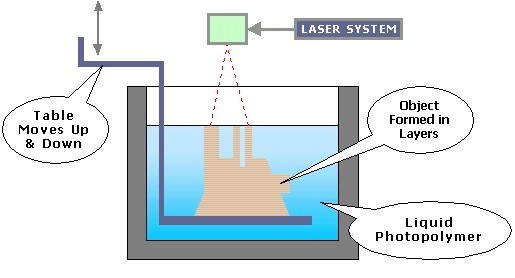
Credit: arptech.com.au
SLS technology has been traditionally employed for industrial applications, such as aerospace, automotive, electronics, and healthcare, to name a few. SLS 3D printers are generally significantly larger and more expensive than FDM or resin-based. They turn out to be extremely efficient in creating strong functional models with very complex geometries, as the printing process does not imply building any support structures, providing the user with almost unlimited design freedom.

Credit: arptech.com.au
Resolution is the first thing to come to mind when speaking of the printed object quality. This parameter is usually described in both horizontal and vertical planes, that is the XY and Z resolution.
The XY resolution is determined by the smallest possible movement of the printer’s head; this resolution can never be finer than the nozzle or laser diameter depending on the technology.
The Z resolution is commonly referred to as layer height, or layer thickness, and many manufactures use this parameter speaking of the printer’s resolution in general. The thinner the layer your machine is able to print, the more detailed and precise model you’ll get.

Credit: formlabs.com
The printer’s resolution depends on a number of factors, the technology used being one of the most prominent. Resin 3D printers are capable of providing the highest resolution of the three technologies under discussion, while FDM machines evidently lose this battle.
The choice of consumable materials naturally depends on the technology the printer is based on. FDM printers use thermoplastics in the form of filaments; resin machines employ various types of photosensitive liquid resins. Engineering-grade thermoplastics in the form of powder are used in SLS printing.

Credit: truventor.ai
Speaking of professional 3D printing we can’t but mention a whole lot of special-purpose materials used by industrial-grade machines, when specific properties of the final parts are highly needed. Those can be composites, like carbon fiber, graphene, or glass-filled materials; some manufactures develop printing technologies that allow using ceramics, concrete, or even wood for printing. There are also materials created for particular applications, like dental resins, or wax, used for making molds in jewelry production. And, probably, the most demanded material in professional 3D printing, after thermoplastics, is metal, widely used in various industrial applications for producing strong parts with excellent mechanical properties.
A print bed is a plate on which a 3D model is printed, and it plays quite an important role in the overall quality of your prints, as it defines the quality of the first layer printed. If your print bed shows poor adhesion, for example, the entire model can be completely ruined. So, there are certain parameters of the print bed to be taken into consideration, when choosing a printer.

Credit: clevercreations.org
The most common material for a build plate is glass, but there can be different options, depending on the material type and on your printer’s manufacturer. Professional printers usually offer various features that add to consistent failure-proof printing, like auto bed leveling system, or magnetic, flexible, or removable build plate. While working with high-temp materials, a heated bed plate is necessary.
3D printing, though safe while taking certain precautions, can carry potential risks. Some powder materials can be accidentally breathed in, others are harmful when contacted with skin. There is also a risk of burning, as the process is associated with high temperatures.
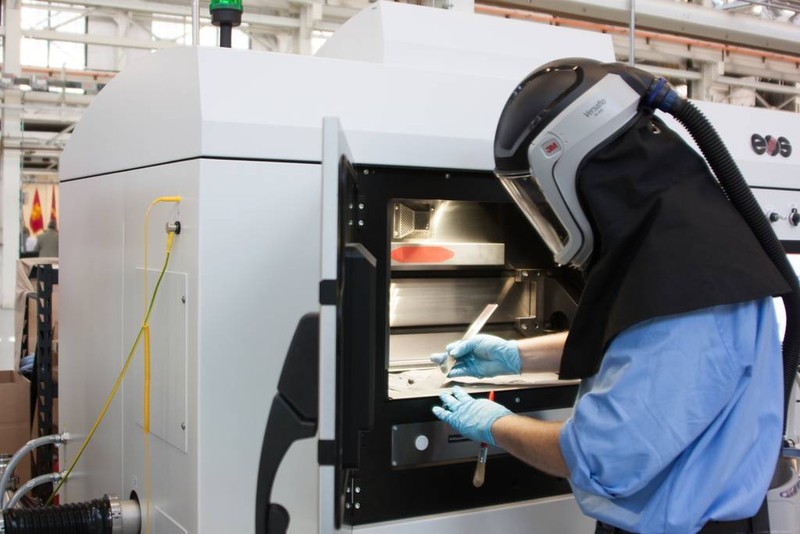
Credit: defensenews.com
There are some necessary rules to be followed in order to reduce the possible hazards. Some printer models can be operated only by trained staff, so access to such equipment should be limited. Wearing protective equipment, like safety glasses or gloves, is also obligatory in certain cases. To minimize the risk of toxic emission, it is recommended to use build chamber enclosures and proper ventilation and air filtration systems.
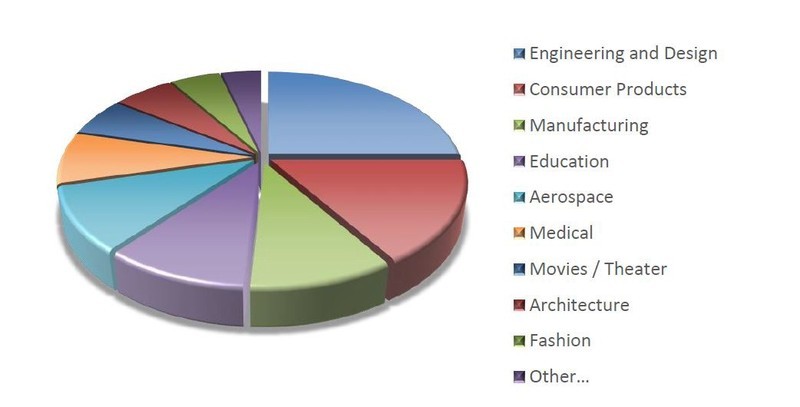
Credit: medium.com
Originally created as a powerful means for rapid prototyping, 3D printing has proved itself indispensable in this field. The use of additive manufacturing allows for significant cost-reduction and time-saving while creating prototypes, compared to traditional tooling. It lets engineers develop new designs of almost any complexity with further testing and modifying at no additional cost. All possible design failures can be spotted and fixed in early stages of product development, before it comes to mass production.
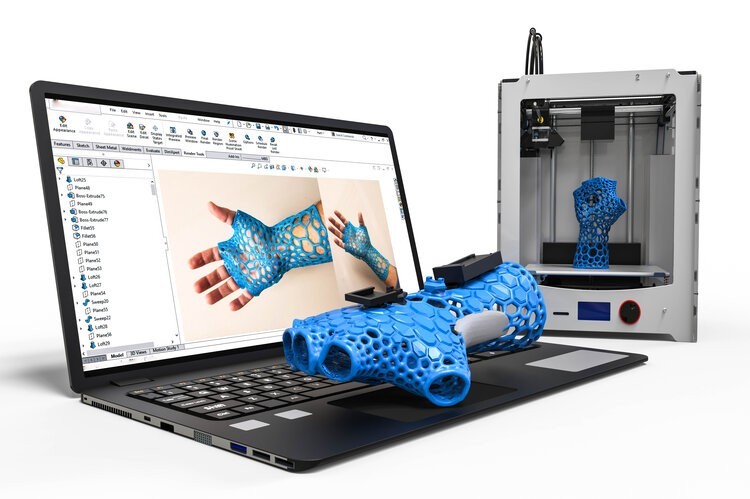
Credit: appliedst.co.uk
3D printing is not only good for prototyping, end-use parts manufacturing can also benefit from its advantages. First used for creating concept models, with the implementation of new technologies into the printing process, the broaden range of materials, and reducing production costs, 3D printing is now utilized for producing end-use parts either as a bridge to traditional manufacturing, or, in case of complex designs and not so large production volumes, as a full-cycle method. Additive manufacturing provides wide opportunities for custom-built products, as well as for low-run production, when injection molding, for example, is of no efficiency. Another application of 3D printing is producing spare parts for discontinued models, thus prolonging the life-cycle of a product.
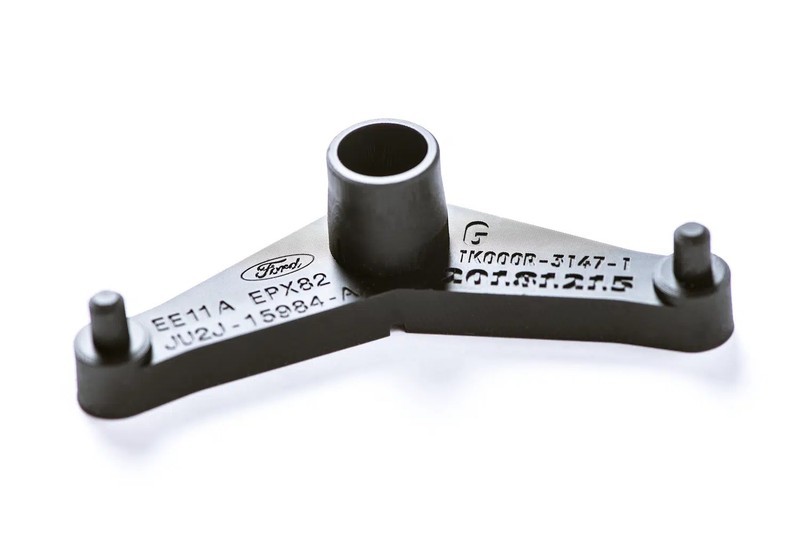
Credit: 3dprintingmedia.network
Medical and dental industries today are among those adopting additive manufacturing technologies most rapidly. One of the benefits of 3D printing, namely its ability to create custom-made products, makes it a perfect tool for producing patient-specific devices, such as prosthetics or implants. In dentistry 3D printed crowns, bridges, aligners, and surgical guides help reduce the cost and waiting time, yet allowing for the creation of perfectly fit devices for every patient.

Credit: dentistry.co.uk
3D printing can also be employed in surgical planning to produce organ models that doctors use for surgery preparation.
In architecture and construction 3D printing pushes the boundaries allowing designers to carry out their most daring ideas that had no chance to survive a couple of decades ago. Alongside creating interior design objects and concept models, architects now have the opportunity to 3D print real construction elements, like walls, fences, columns, and even the entire buildings!
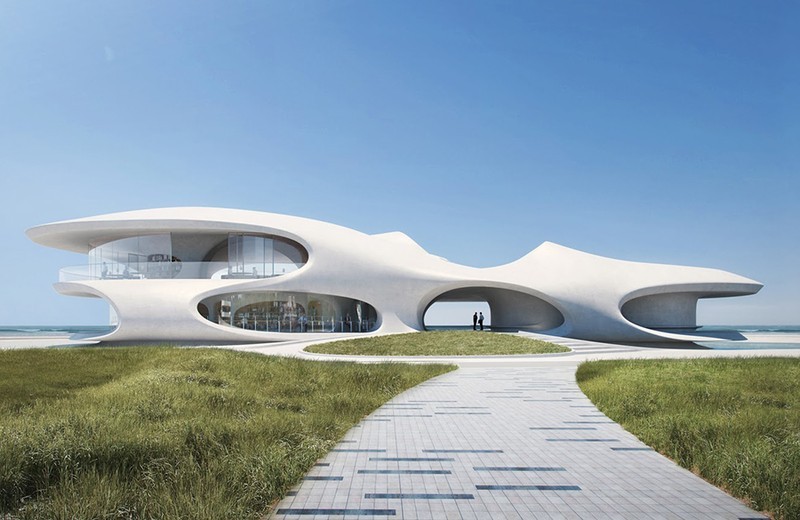
Credit: re-thinkingthefuture.com
In the field of education 3D printing can be successfully applied in all stages of the learning process, from primary schools to colleges and universities. Teachers can use 3D printed models for their classes, as physical objects, that could be touched and seen, are more likely to help children grasp the new notions, than any other visual aids. University students utilize 3D prints as additional material for their projects.
Besides, 3D printers in educational institutions are essential to demonstrate to the students 3D printing workflow and its applications in real life. A lot of universities, like MIT, for instance, offer courses, teaching the fundamentals of 3D printing and design.

Credit: createeducation.com
And now we’ll get on to the list of the best professional 3D printers in today’s market, divided into categories for your convenience.
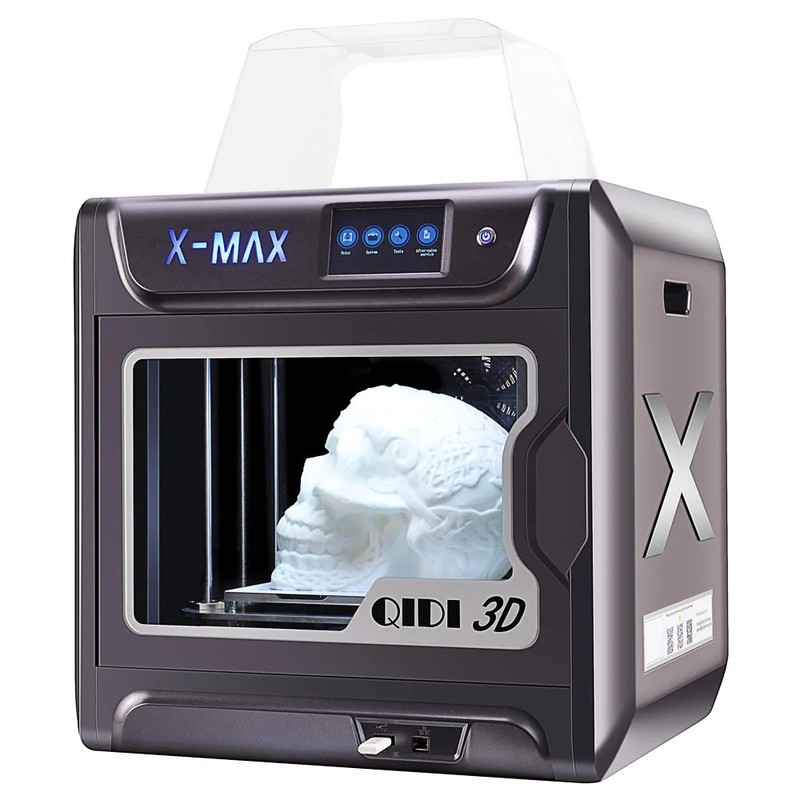
Credit: qidi3d.com
The QIDI Tech X-MAX is an FDM 3D printer with a large for a semi-professional device build volume of 300 x 250 x 300 mm and a fully enclosed build chamber. The X-MAX can print layers with the resolution of 50 microns providing detailed high-quality parts. It comes with two interchangeable extruders with nozzle diameter of 0.4 mm, one is for printing with PLA, ABS, and TPU, and the other is for high-performance materials, such as PC, Nylon, or Carbon fiber. The heated flexible removable print bed allows printing on both sides. The device sports an air purification system, print-pause and power outage resume functions.

Credit: 3dprintmanual.com

The Creality CR-5 Pro High-Temp version features a large fully-enclosed build chamber of 300 x 225 x 380 mm. Together with the heated print bed and the maximum nozzle temperature of 300 °C it allows printing with high-temp filaments, like PLA, TPU, ABS, and others; the filament diameter is 1.75 mm. The machine is equipped with a carbon glass-coated print bed, heated up to 110 °C, with an auto bed leveling system, which ensures good adhesion and easy removal of the prints. Filament runout detector, resume printing function and cloud printing support provide continuous printing, reducing the risk of failures.
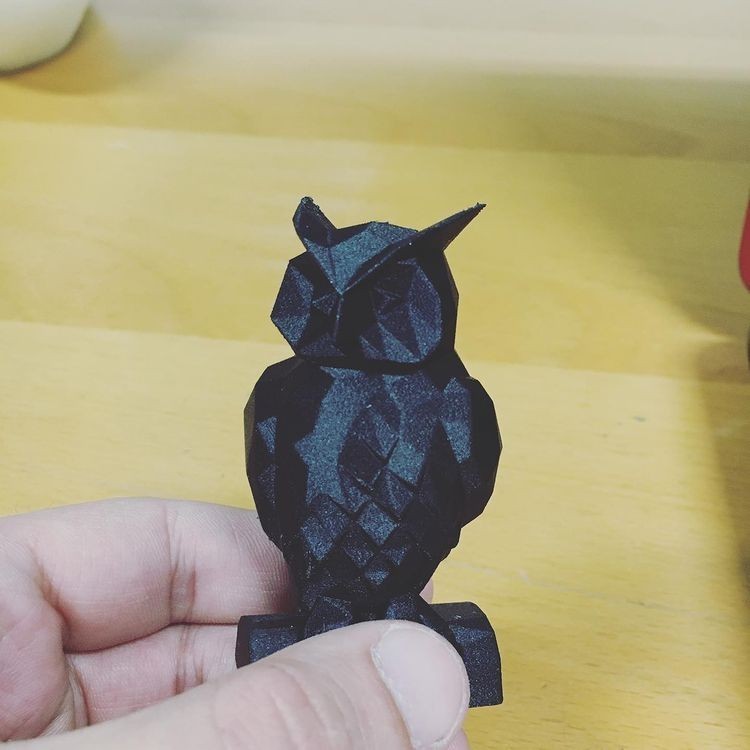
Credit: ses_3dprinter / Instagram
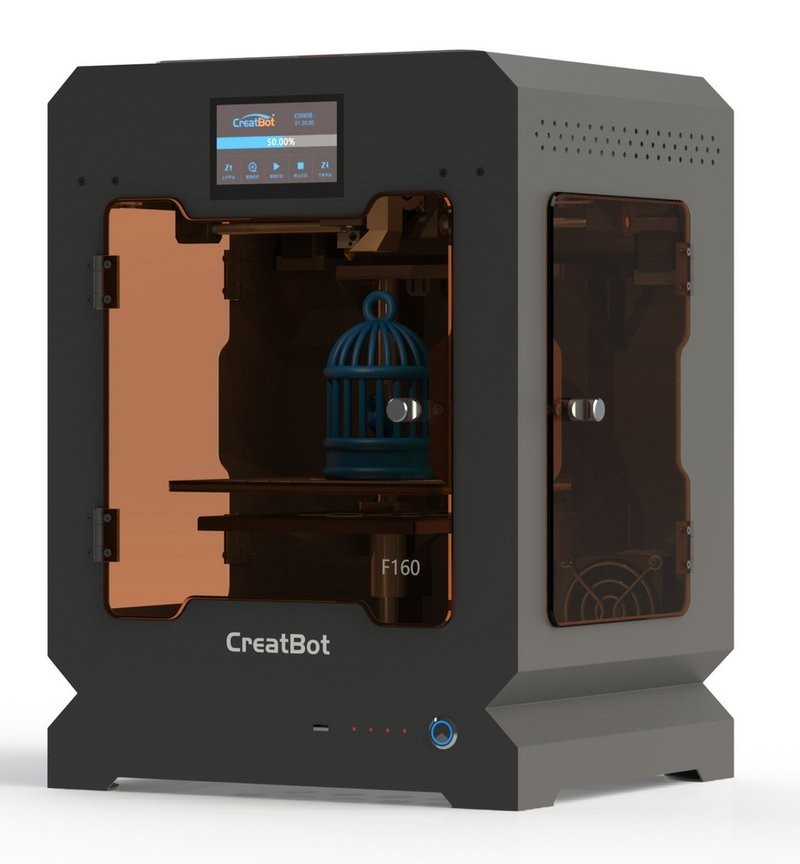
Credit: creatbot.com
The Creatbot F160-PEEK is a high-temperature modification of the Creatbot F160 model, the difference being in the maximum nozzle temperature of 420 °C (compared to 260 °C for the F160) and the build chamber that can heat up to 70 °C. Alongside the build plate with the maximum temperature of 150 °C and fully enclosed build chamber this allows printing with refractory materials, like PEEK, ULTEM, and carbon-reinforced filaments. The minimum layer height of 40 microns ensures high-resolution prints; the maximum print speed of up to 300 mm/s and a set of useful features place the printer on the side of professional equipment.

Credit: creatbot.com
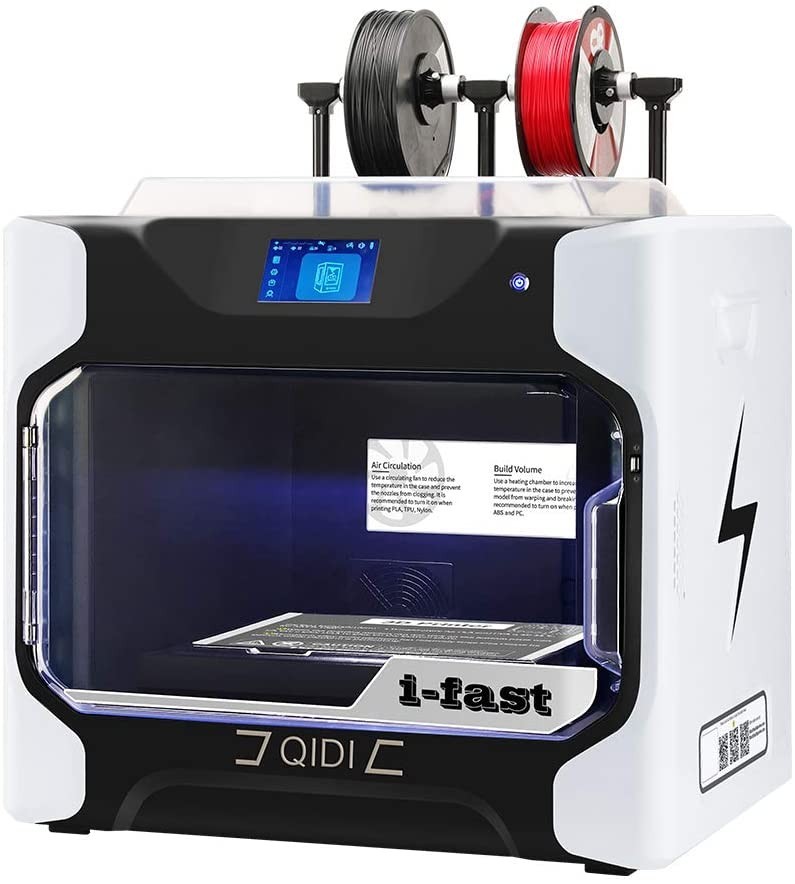
Credit: qidi3d.com
The QIDI Tech i-FAST is an industrial-grade FDM 3D printer compatible with a wide range of materials, including PLA, Nylon, TPU, PETG, ABS, PC, Wood, and CF filaments. The dual-extrusion system allows printing PVA water soluble support structures or multicolor parts. The maximum nozzle temperature is 300 °C. The device features a fully enclosed build chamber heated up to 60 °C and a magnetic removable heated build plate. The thermal insulation system helps prevent any temperature fluctuations inside the build chamber, ensuring precise warping-free printing. With the large build volume of 330 x 250 x 320 mm you can print fairly large parts or multiple single models in one go.
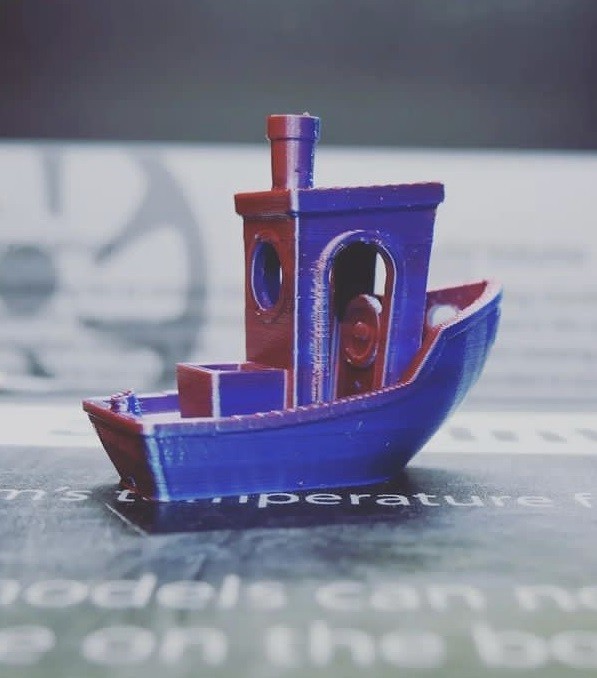
Credit: @torquay_audio / Instagram
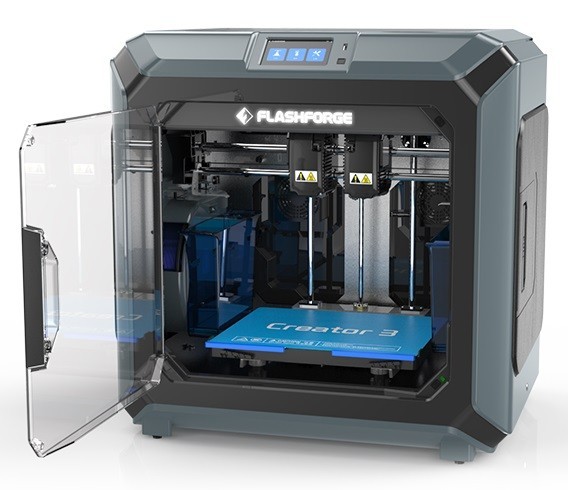
Credit: flashforge.com
The Flashforge Creator 3 features the independent dual extrusion system that allows you to print two models simultaneously either in mirror or in duplication mode; it also makes it possible to print soluble supports or multicolor objects.The high-temperature 300 °C extruder provides compatibility with a large number of filaments, including engineering-grade materials, like Nylon or Carbon-fiber reinforced plastics. With the minimum layer height of 50 microns, the Creator 3 provides precise, durable, dimensionally accurate parts, and due to the build volume of 300 x 250 x 200 mm you can print considerably large models.
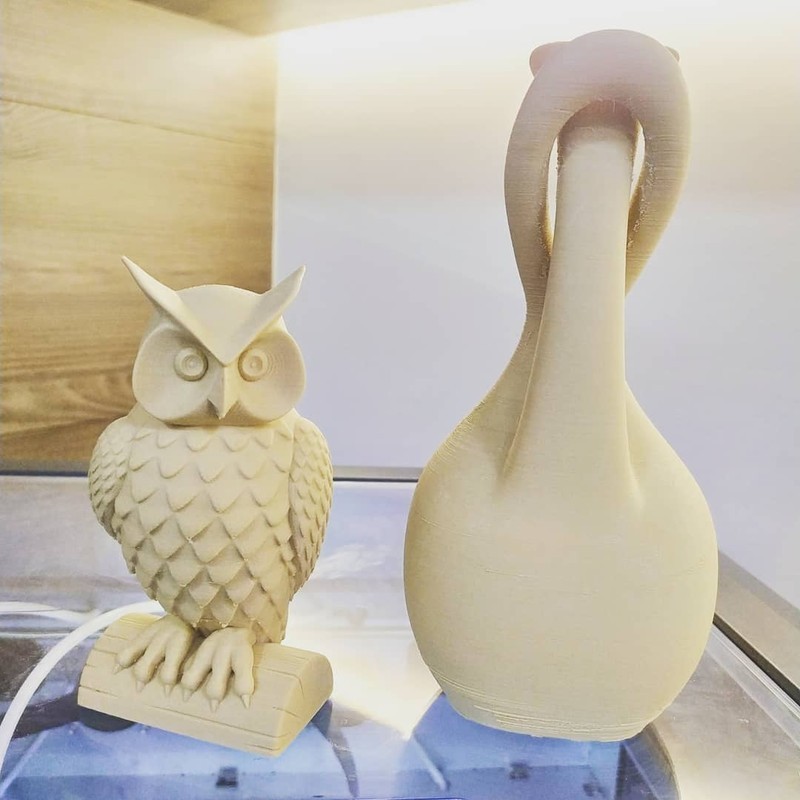
Credit: sculpt03d / Instagram

Credit: creatbot.com
The CreatBot F430 is a professional-grade FDM 3D printer featuring a large build volume of 400 x 300 x 300 mm and dual extruder, with the left 260 °C hotend for printing with PLA, ABS, PC, Nylon, Carbon fiber, and flexible filaments, and the right 420 °C hotend, made of martensite steel, for printing with high performance materials, such as PEEK, ULTEM, etc. The print bed heated up to 120 °C is made of ceramic-glass, and together with the 70 °C build chamber it prevents prints from warping. The print resume and filament detection functions stand for consistent 24/7 printing.

Credit: creatbot.com

The Fusion3 F410 is a high-performance industrial-grade FDM 3D printer, which boasts its rigid metal enclosure and F-series motion control system that help minimize vibrations thus ensuring fast accurate prints. The interchangeable print head is equipped with a hardened wear-resistant steel nozzle, suitable for printing with abrasive filaments, like carbon fiber. The multi-zone heated print bed features the bed level compensation technology, which levels the build plate before every print.
The F410 is a very quiet device with noise level of only 36 db, which makes it a perfect choice for office workspaces and educational institutes.

Credit: fusion3design.com
Cons

Credit: intamsys.com
The Intamsys Funmat HT model is available in two modifications, the Enhanced version featuring automatic bed leveling, a ceramic-glass magnetic removable build plate, and a software-improved bed motion system. The printer is designed to work with high-temperature materials, such as PEEK. This ability is provided by the advanced thermal system, including 450 °C extruder with an all-metal hotend, a 160 °C heated print bed, and a heated build chamber with the stable temperature of 90 °C. The Funmat HT Enhanced supports a wide range of materials, including those produced by third-party manufacturers. The minimum layer height of 50 microns ensures highly-detailed precise prints.
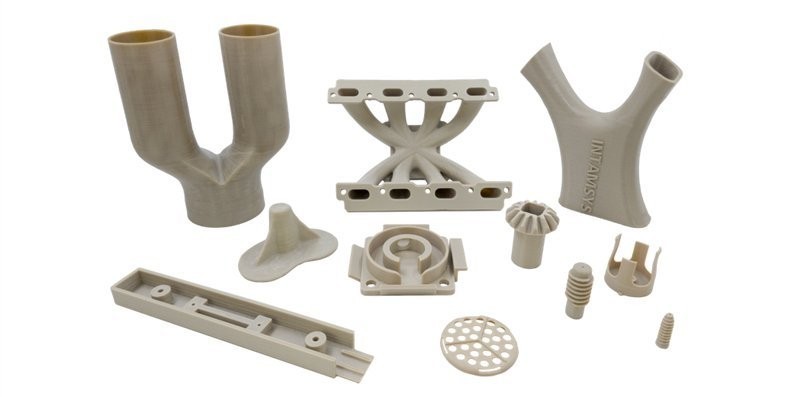

The Raise3D E2 features the Independent Dual Extrusion system, called IDEX. The use of two independent extruders increases the productivity of the printer when printing in Mirror or Duplicate modes. With the maximum nozzle temperature of 300 °C and the print bed that can reach the temperature of 110 °C, it is possible to work with a wide range of materials, including carbon fiber, glass-filled nylon, and others. The E2 comes with two 0.4 mm nozzles, which can be replaced with optional nozzles of 0.2–1.0 mm in diameter. The minimum layer height of just 20 microns provides exceptional print precision and allows for the use of the E2 in applications requiring high accuracy, such as dentistry. A set of smart features, including multi-zone bed leveling system, a built-in camera, and a filament runout sensor, ensures consistency and predictability of the printing process.
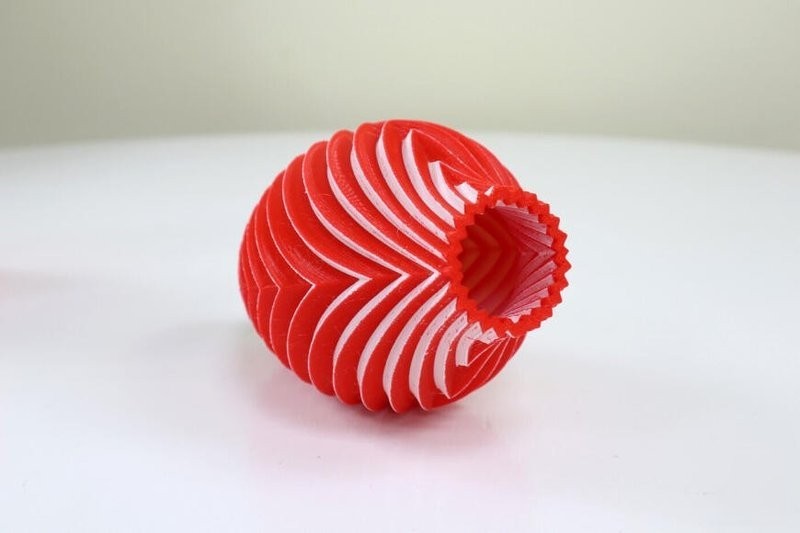

The Raise3D Pro 3 is a professional dual extruder FDM 3D printer with a build volume of 300 x 300 x 300 mm. The machine is intended for professional use, so it’s equipped with quite a number of helpful features to ensure consistent high-speed printing of accurate parts. The Pro 3 is compatible with a wide range of both proprietary and third-party materials. The flexible steel build plate with an auto leveling function provides proper first layer adhesion and easy removal of the final part. The built-in camera, power loss recovery function, filament runout sensor, and door open detection contribute to safe, failure-free continuous printing.
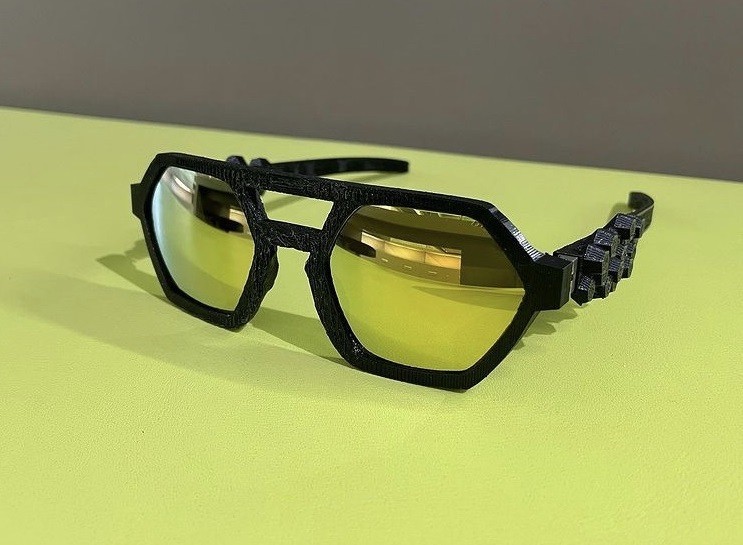
Credit: @fram3d_impression3d / Instagram
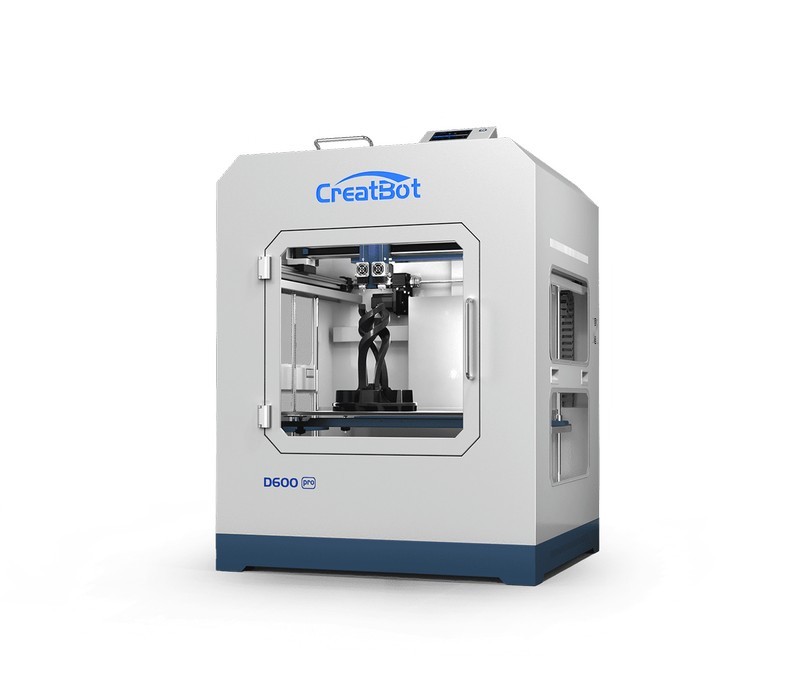
Credit: creatbot.com
The large-format professional FDM 3D printer Creatbot D600 Pro with the build volume of 600 x 600 x 600 mm offers high performance in a variety of industrial applications, as well as incomparable value for money. The printer is equipped with a dual extruder mechanism with the maximum right hotend temperature of 420 °C. The D600 Pro, unlike the original D600 model, boasts the hot air chamber, which can maintain a stable temperature of up to 70 °C, allowing printing with materials, subject to high shrinkage, like ABS or nylon. The printer is also equipped with a filament drying room and a ceramic-glass build plate heated up to 100 °C with an auto leveling system using a BLTouch sensor.

Credit: @creatbot_japan / Instagram
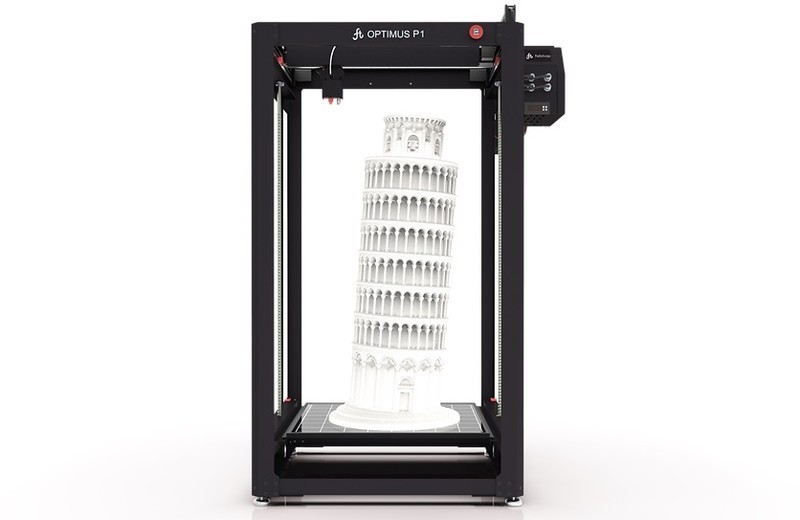
Credit: optimus3dp.com
The Optimus P1 is a professional large-format FDM 3D printer designed by the Swedish-based Febtop Tech company. The device features a modular design and comes as a kit, though the assembling process will hardly take longer than an hour and a half. Probably, the most noticeable feature of the Optimus P1 is its ability to work as a laser-engraving machine, the switch between the printing and laser-engraving modes being simple and quick. The Optimus P1 boasts a sizable build volume of 600 x 600 x 1100 mm, a heated print bed with the maximum temperature of 100 °C and an auto leveling function, and the layer height of 50–800 microns depending on the nozzle size.
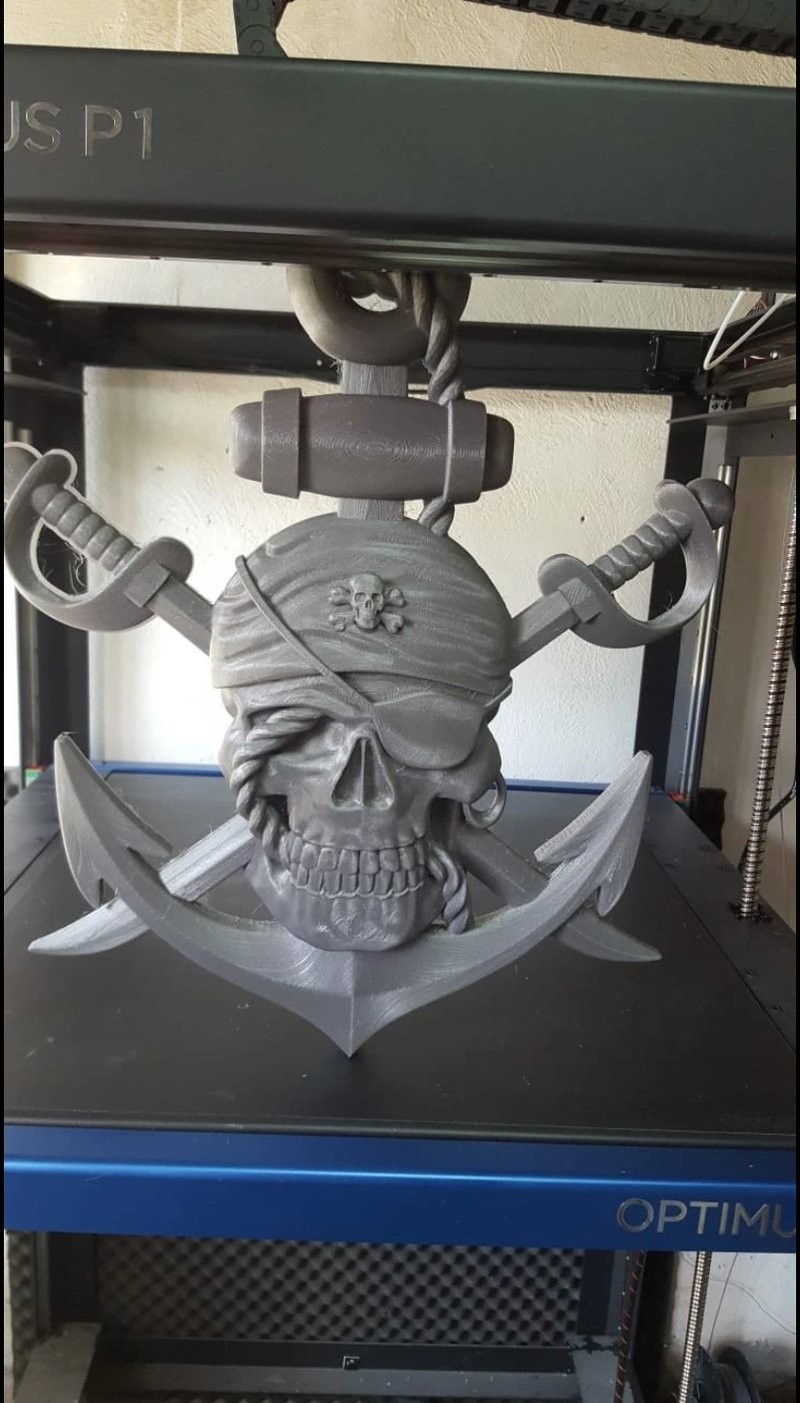

Credit: creatbot.com
With the Creatbot F1000’s huge build volume of 1000 x 1000 x 1000 mm, the large-scale printing possibilities are limited only by your imagination. The new auto-rising dual extrusion system with the maximum temperature of 420 °C is equipped with interchangeable nozzles — you can use brass, stainless or martensite steel, or ruby nozzles depending on your project. The available nozzle diameters range from 0.4 to 1.5 mm. Printing with high-shrinkage materials is no longer a problem with the fully enclosed heated build chamber; the rigid construction and the accurate linear guide rail minimize vibrations and ensure accurate filament feeding, thus excluding possible warping and stringing issues.
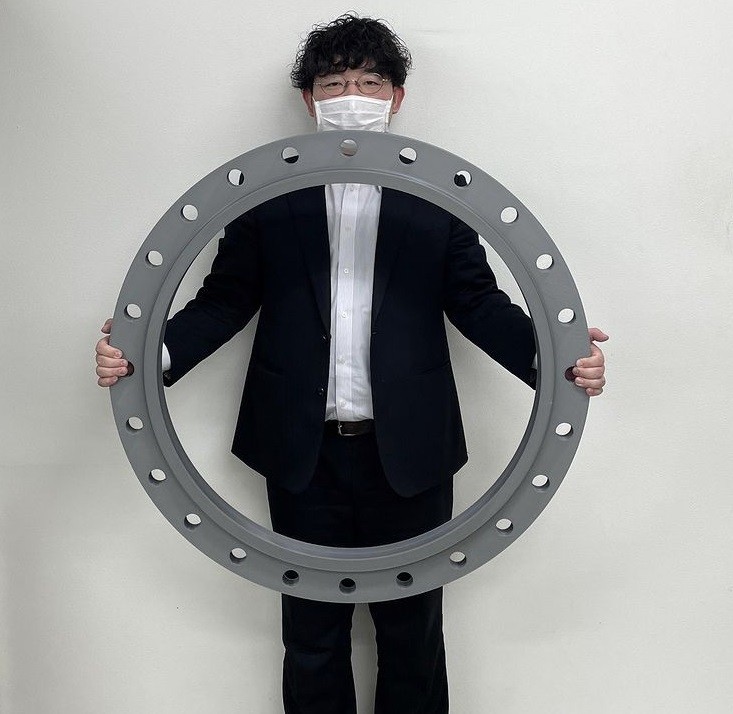
Credit: @creatbot_japan / Instagram
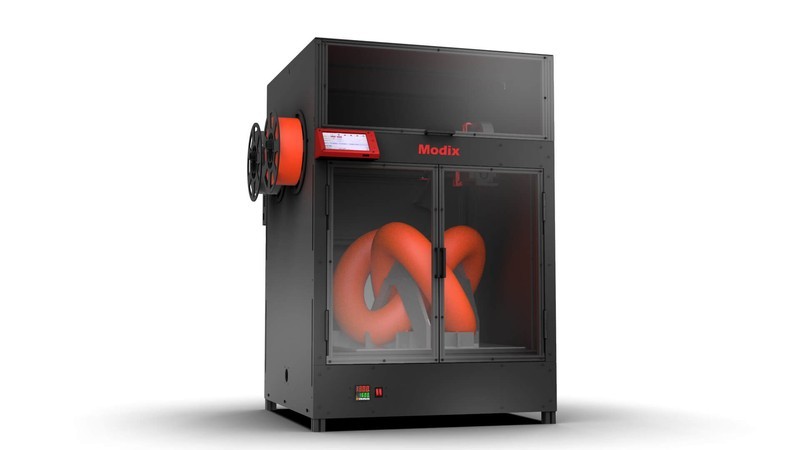
Credit: modix3d.com
Modix is an Israeli-based company, founded in 2014, that focuses on developing large-scale 3D printers. The current line-up includes six models, namely BIG-60 V3, BIG-120X V3, BIG-120Z, BIG-180X, BIG-METER, and BIG-40, all of them based on FFF (fused filament fabrication) technology. All the printers come as kits with detailed assembly guides and videos.

Credit: modix3d.com
The Modix printers feature large build volumes, starting with the BIG-40’s 400 x 400 x 800 mm and to the gigantic 1800 x 600 x 600 mm of the BIG-180X. All the devices have a modular design and share the similar core concept which makes them easy to upgrade and customize. The machines feature the aluminum auto leveling build plate heated up to 120 °C, the 7" Duet3d operating touchscreen, and dual extrusion system with E3D V6 Volcano high-flow heat block hotend, that can be replaced with optional hotends for very small highly-detailed items or for high-speed printing of bulky objects. The maximum nozzle temperature is 285 °C, which can be converted to 500 °C by changing a thermistor.

Credit: modix3d.com
The Modix printers are compatible with a wide range of materials, such as PLA, ABS, composites, like Carbon fiber, Wood, Copper, Brass, Magnetic, PHA, PVA, Hips, Nylon, TPE & TPU (flexible) Co-Polyester, and PETG.
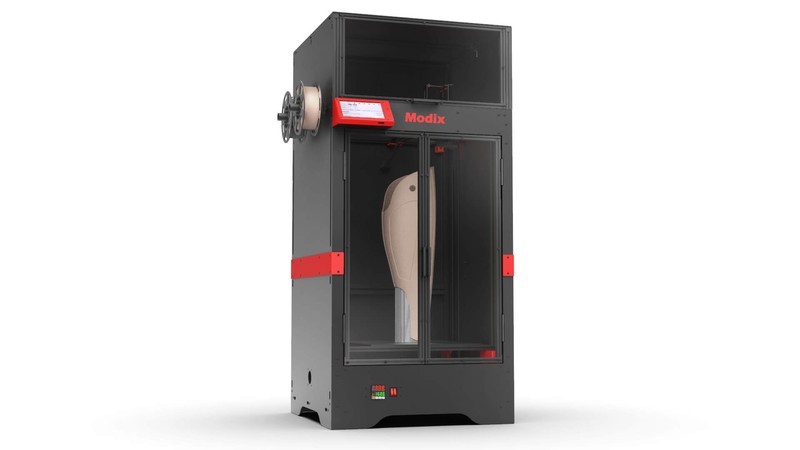
Credit: modix3d.com
The two flagship models, the BIG-180X and BIG-METER feature fully enclosed build chambers, the dual print head, that allows printing complex models with internal geometry, and DUEX Expansion board, supporting up to 5 more extruders in addition to the standard dual extruder on the main board. For the rest of the models these features are available as an option.

Credit: modix3d.com
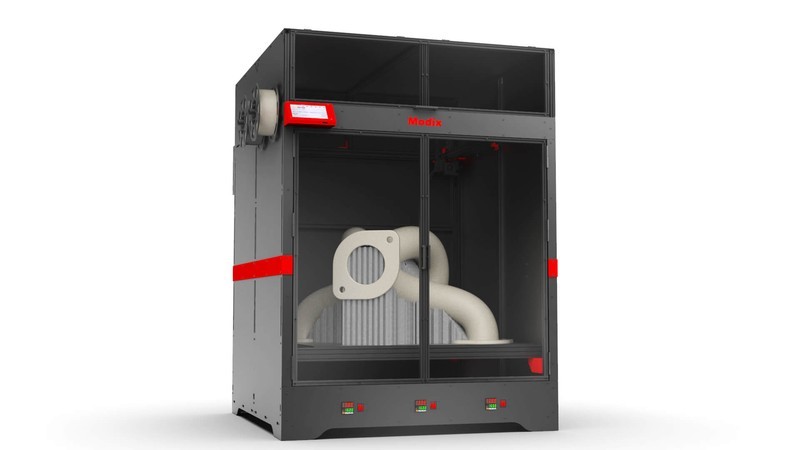
Credit: modix3d.com
Below you’ll find the main differences in the Modix 3D printers specs.
|
BIG-60 V3 |
BIG-120X V3 |
BIG-120Z |
BIG-180X |
BIG-METER |
BIG-40 |
|
|
Print volume (XYZ), mm |
600x600x660 |
1200x600x640 |
600x600x12000 |
1800x600x600 |
1010x1010x1010 |
400x400x800 |
|
Dimensions (WxDxH) |
906x1060x1356 |
1556x1060x1356 |
906x1060x2000 |
2170x1060x1430 |
1300x1470x1830 |
870x720x1520 |
|
Weight, kg |
120 |
165 |
140 |
210 |
200 |
100 |
|
Enclosure |
optional |
optional |
optional |
included |
included |
optional |
|
Secondary print head |
optional |
optional |
optional |
included |
included |
optional |
|
DUEX Expansion board |
optional |
optional |
optional |
included |
included |
optional |
|
Layer height, microns |
40–800 |
40–800 |
40–800 |
40–800 |
40–800 |
40–800 |
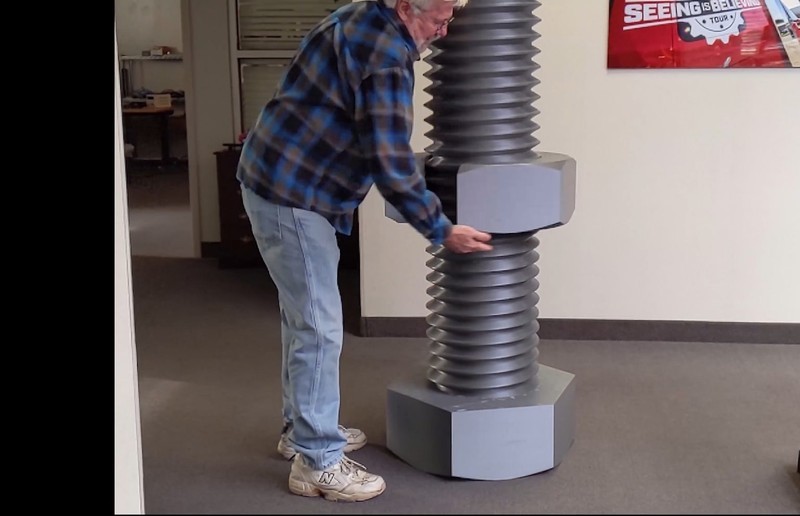
BIG-120X / Credit: modix3d.com
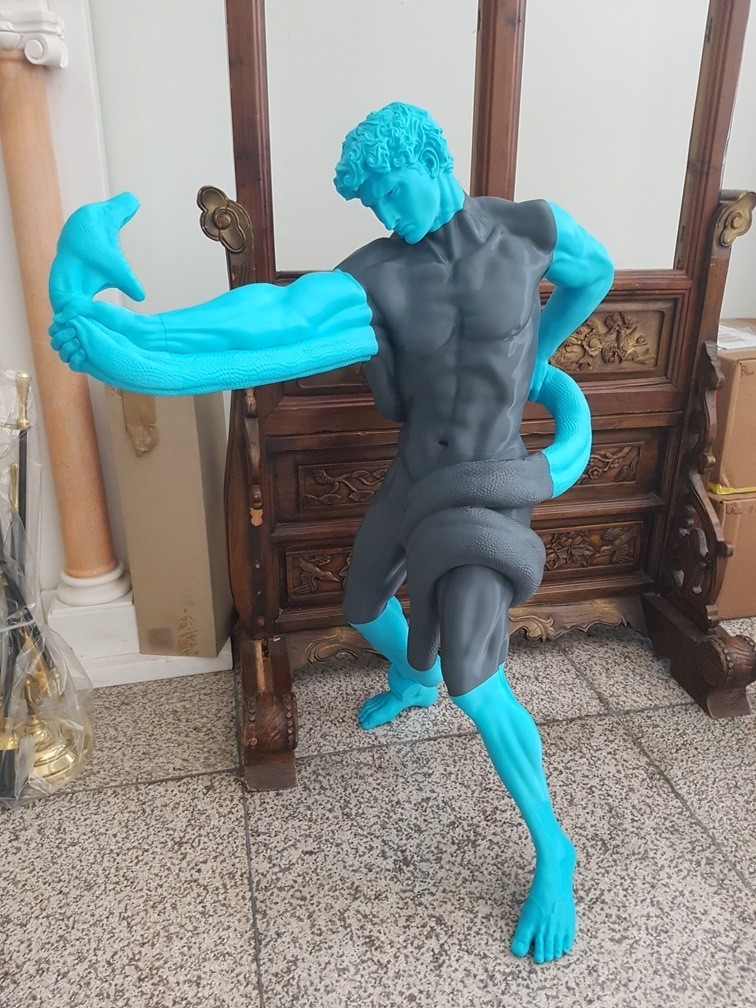
Credit: modix3d.com

BIG-60 / Credit: modix3d.com
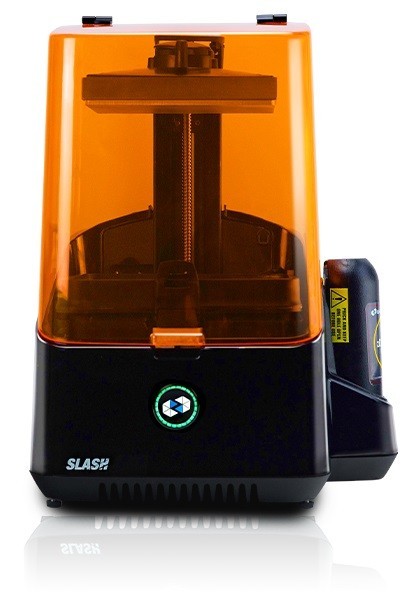
Credit: uniz.com
The Uniz Slash 2 is a professional desktop resin 3D printer, based on LCD technology. Due to the immensely high speed and exceptional print quality with the minimum layer height of just 10 microns, the Slash 2 is widely used in dentistry and jewelry production, as these are the industries where print accuracy and high level of detail, as well as speed, are of major importance. The printer is also a good choice for hobbyists, as it allows printing surprisingly precise models with incredible surface finish. The build volume of the device is 192 x 120 x 200 mm, and its 8.9" 4K LCD alongside the dedicated blue LED array provides a uniform light exposure over the entire print area, thus providing dimensional accuracy of the part.
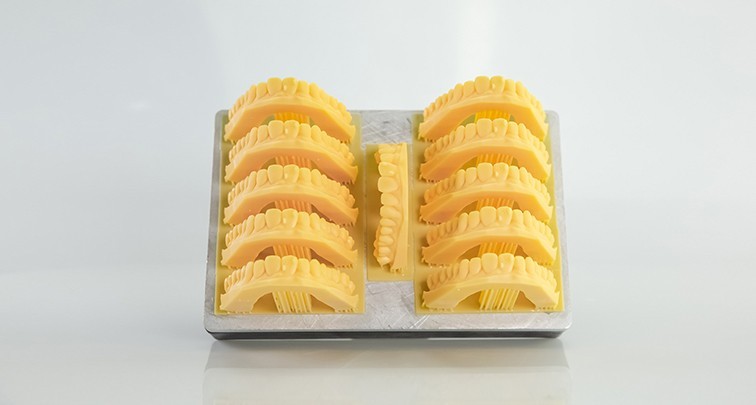
Credit: uniz.com
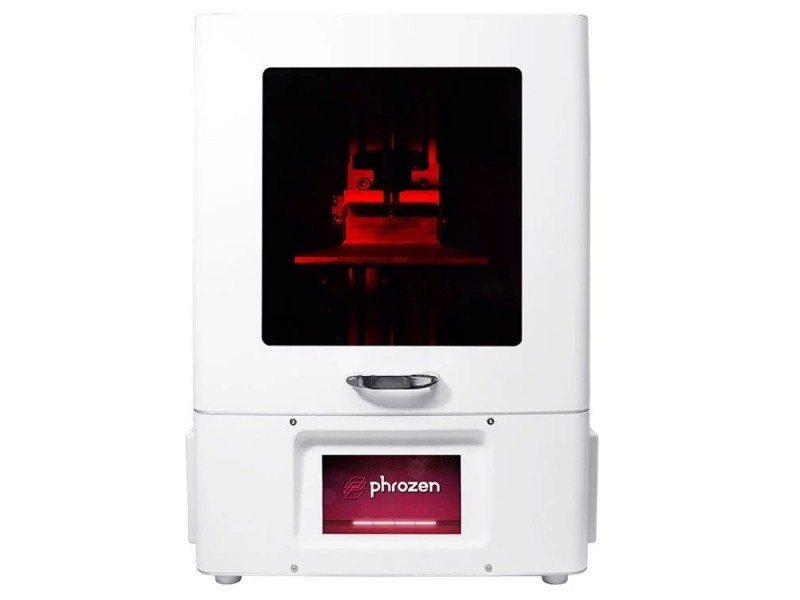
The Phrozen Sonic XL 4K 2022 is an LCD resin 3D printer designed specifically for the dental industry. It is compatible with Phrozen Dental Synergy Slicer software and can print with special dental resins. The ability to print highly detailed precise models at a fast speed makes the Sonic XL 4K 2022 a perfect device not only for dentistry, but also for jewelry manufacturing, model-making, or souvenir production. The printer is equipped with a custom-made 8.9" 4K monochrome LCD screen and the new ParaLED 3.0 optical module which provides uniform layer thickness over the entire build area. The Sonic XL 4K 2022 is compatible with a number of various 405-nm resins, including third-party materials.

Credit: phrozen3d.com
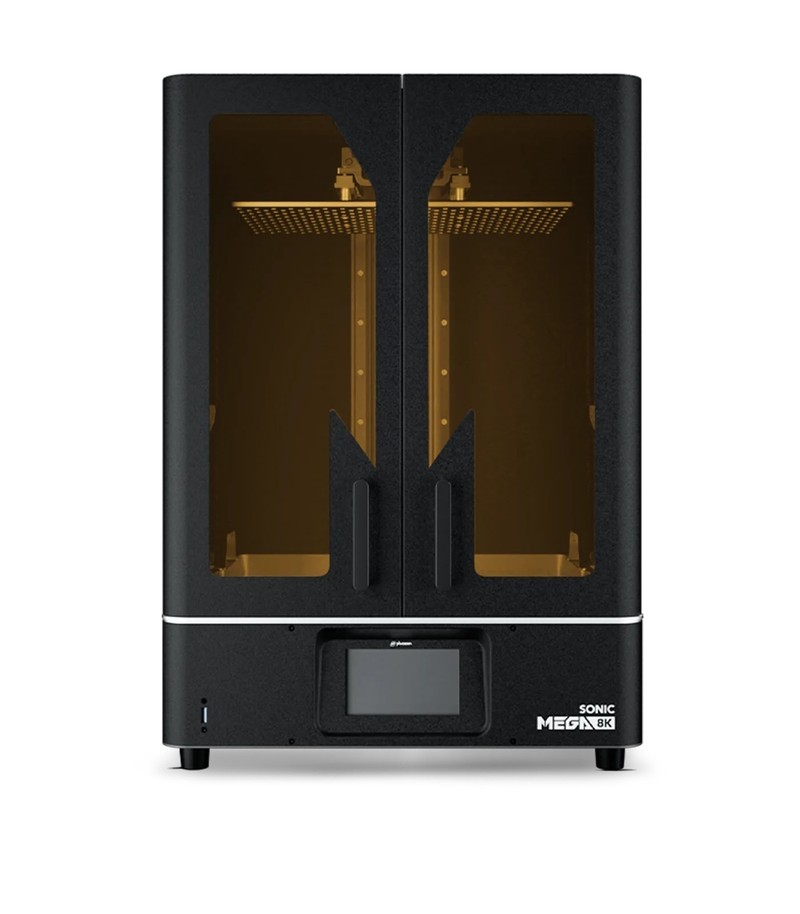
Credit: phrozen3d.com
The Phrozen Sonic MEGA 8K combines a huge, for a resin printer, build volume with amazing print quality. The device is equipped with a 15" monochrome LCD screen with 8K resolution, and features a build volume of 330 x 185 x 400 mm, which is undoubtedly one of the biggest in the market. The build platform of the Sonic MEGA 8K is pre-calibrated, so it takes no time to start printing. The full-metal frame and dual linear rail ensure stability, especially while printing large and heavy-weight parts. To operate the printing process, the machine is equipped with a 5" touchscreen. The MEGA 8K model will become the best choice for a wide range of professional applications that require high quality prints and really large build volume for producing sizable models or multiple smaller parts in one go.

Credit: phrozen3d.com

Credit: formlabs.com
The Formlabs Form 3L is a large-format resin 3D printer with a massive build volume of 335 x 200 x 300 mm. The device is based on proprietary LFS (Low Force Stereolithography) technology that is aimed at improving the surface finish of the prints. The Form 3L features a 5.5" full-color display; the PreForm free print preparation software automatically suggests optimal print settings that can be manually adjusted if needed. The device allows for cloud monitoring of the printing process, the connectivity options include Wi-Fi, Ethernet, and USB.
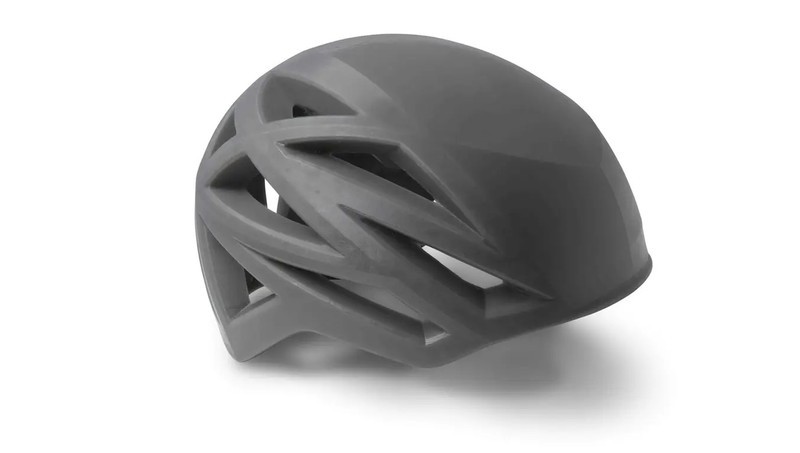
Credit: formlabs.com

Credit: asiga.com
The Asiga PRO 4K45 is a resin DLP-based professional 3D printer, used primarily in digital dentistry, audiology production, and jewelry manufacturing. The PRO 4K45 features a build volume of 122 x 69 x 200 mm, and can print with a wide range of materials produced by any manufacturer. The proprietary SPS (smart positioning system) technology ensures the proper forming of every layer, providing consistent and accurate printing results. The Asiga PRO 4K45 is capable of producing high-quality dimensionally accurate models at decent print speed.

Credit: asiga.com
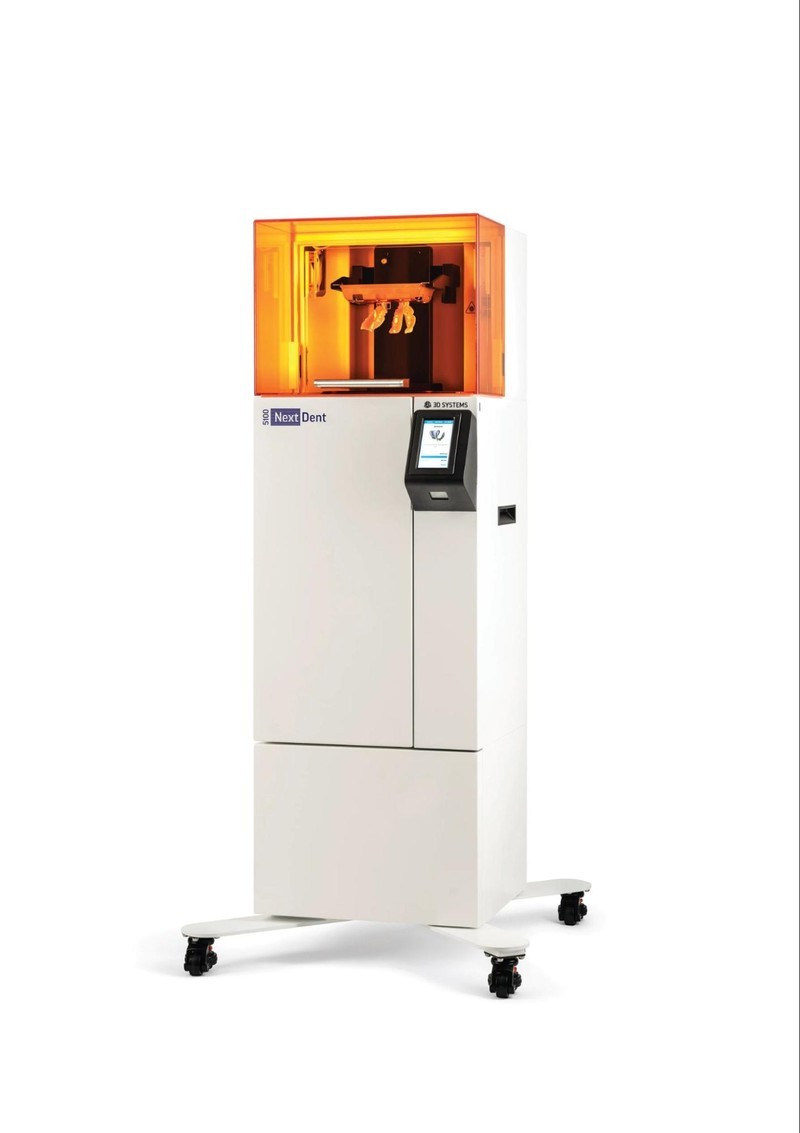
Credit: dentalproductsreport.com
The NextDent 5100 is a dental resin 3D printer developed by the 3D Systems company. The device is designed specifically for dental labs and clinics and allows for printing trays, models (both orthodontic and prosthodontic), surgical guides, dentures, orthodontic splints, crowns, and bridges in a more accurate, speedy and cost-effective way, than any traditional method can offer. The NextDent 5100 can perform as a part of a complete solution for digital dental workflow, that includes intra-oral scanning, the 3D Sprint software, a variety of dental NextDent resins, the NextDent LC-3DMixer for mixing materials, and the NextDent LC-3DPrint Box UV post-curing unit. The machine features the build volume of 124.8 x 70.2 x 196 mm and boasts a fairly high print speed.

Credit: makepartsfast.com
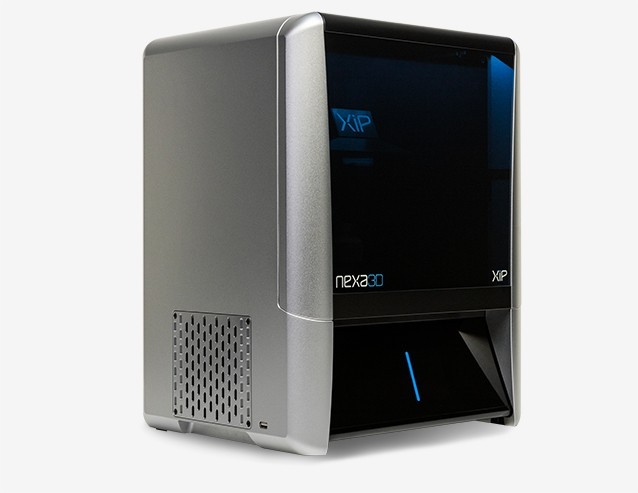
Credit: nexa3d.com
The Nexa3D XiP is a desktop professional resin 3D printer, featuring the proprietary Lubricant Sublayer Photo-curing (LSPc) technology, that allows for incredible print speed of up to 18 cm per hour. The device can be successfully used in a number of industrial applications, including but not limited to prototyping, engineering, healthcare, and education. The modular 9.3" 4K monochrome LCD screen and advanced UV Light Engine ensure uniform light exposure thus delivering consistent accurate prints. The build volume of the XiP is 195 x 115 x 210 mm; the device can print layers at the minimum height of 50 microns. It’s a completely open material system, so you are free to use compatible resins by any manufacturer.
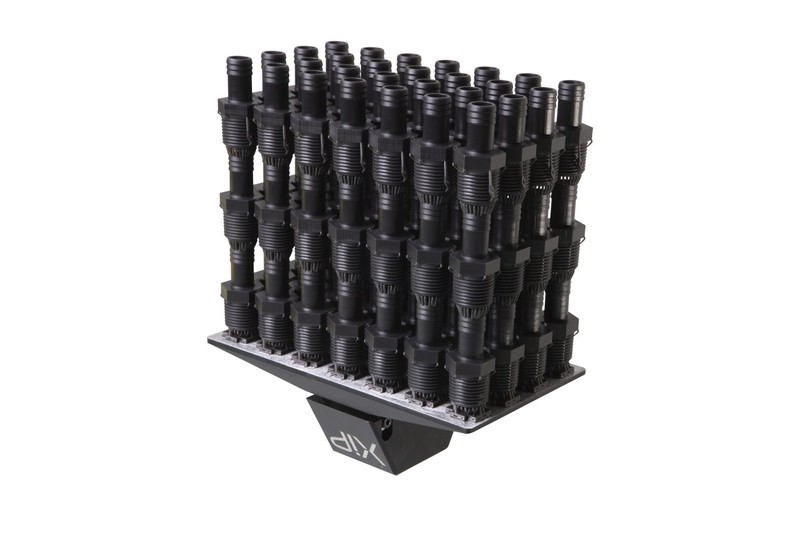
Credit: 3dprintingindustry.com

Credit: nexa3d.com
The QLS 820 is the first Nexa3D’s SLS 3D printer, that keeps up the company’s reputation for speed, offering up to 4 times the print speed of any traditional laser sintering technology due to the new QLS (Quantum Laser Sintering) technology. The quad laser system, powered by 4 x 100 W CO2 lasers, ensures large production volumes alongside a highly automated and easily scalable printing process. The printer features a spacious build volume of 350 x 350 x 400 mm and the layer height of 50–200 microns. The maximum production temperature of 230 °C and the inert processing atmosphere provide compatibility with a lot of printing powders, including PA12, PA11, PBT, Polypropylene, as well as aluminum, glass and fiber-filled materials. The QLS 820 is equipped with a standard removable build unit, and you can add more of them if needed, to minimize downtime.
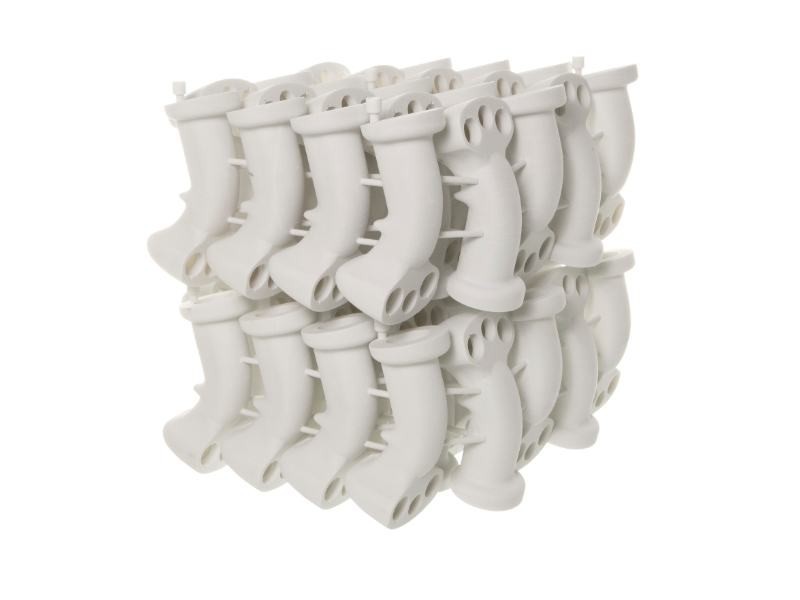
Credit: nexa3d.com
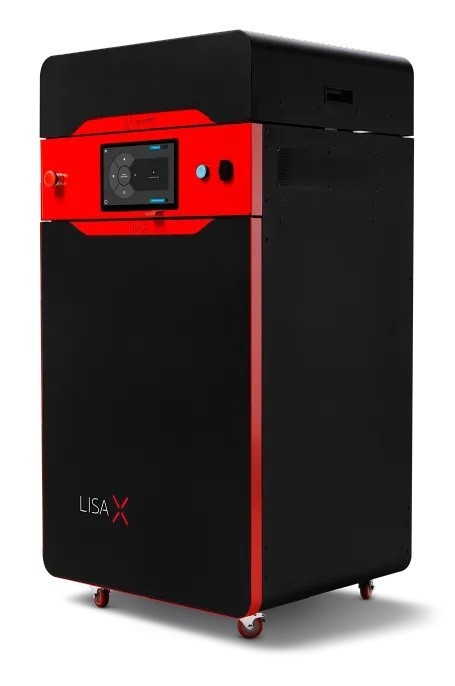
Credit: sinterit.com
The Sinterit Lisa X is the newest and the most powerful model in the company’s lineup of compact SLS printers. Compared to its predecessors, Lisa and Lisa Pro, the Lisa X features a larger build volume of 130 x 180 x 330 mm and an extremely higher print speed of up to 14 mm/h. This makes the Lisa X a professional 3D printer suitable for a wide scope of industrial tasks, like prototyping, end-use parts production, and many others. The Lisa X provides easy and ergonomic operation, minimizing downtimes and ensuring continuous 24/7 production process. For example, you can change the materials in only 15 minutes; the cooldown times don’t take long either — a complete build takes just about a couple of hours to cool down. The Lisa X is an open material system, which means you can use any compatible third-party powders. The advanced version of the proprietary Sinterit Studio software provides the possibility to change and adjust 32 printing parameters, including various materials profiles.

Credit: sinterit.com
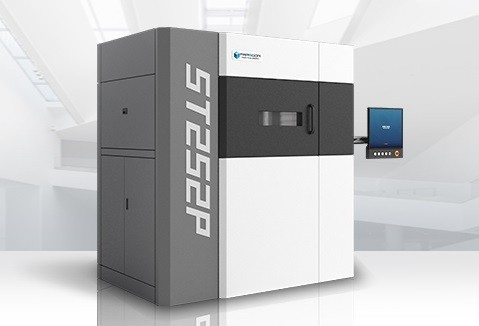
Credit: farsoon.com
The Farsoon 252P is an industrial-grade SLS 3D printer, which is available in two modifications — ST252P and HT252P. The main difference is in the maximum chamber temperature, which measures 280 °C for the ST252P version, while the HT model features 220 °C. Such difference enables the ST252P to print with a wider range of materials, adding high-temp powders to the standard set. The laser power of the two models also differ, the ST using a more powerful 100W CO₂ Laser. The device sports a spacious build volume of 250 x 250 x 320 mm and can print layers at 60 microns height.
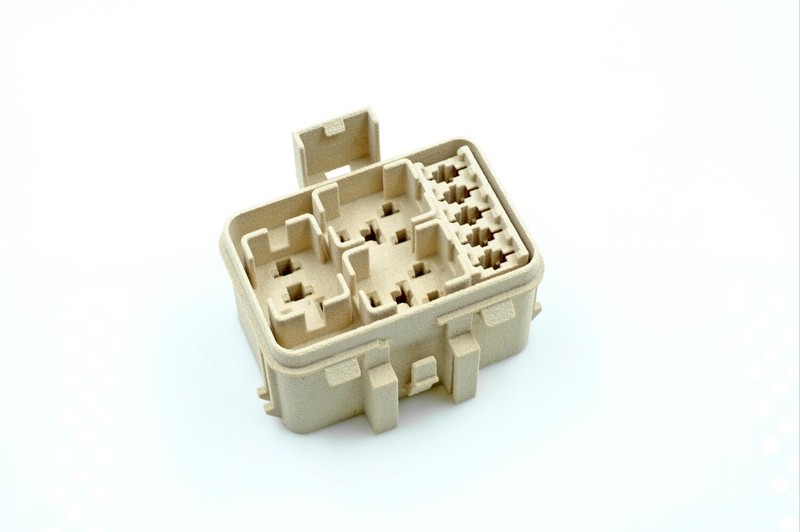
Credit: covestro.com
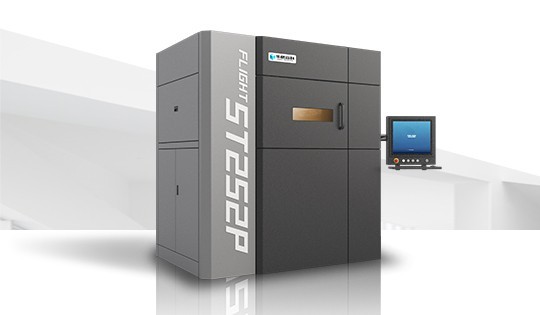
Credit: farsoon.com
The Farsoon Flight 252P Series based on the 252P printer model features Flight, or Fiber Light, technology that employs a new fiber 300 W laser instead of a standard CO₂ laser used in most SLS 3D printers. The new technology provides a smaller laser spot size with increased power and a more homogenous energy distribution to the print bed. These improvements result in a faster print speed and a higher detail level compared to traditional SLS systems using CO₂ lasers. The fiber laser is also more durable which allows for the longevity of such machines. The Flight 252P Series includes two modifications, Flight ST252P and Flight HT252P, that mainly have the same specs as the corresponding 252P Series models, the difference being in the laser type and power, and, consequently, the increased print speed and higher detail of the printed parts of the Flight series. For the rest the Farsoon Flight 252P Series shares the characteristics and advantages of the 252P model, being slightly different in design.

Credit: tpm3d.com
The TPM3D S320HT is an industrial-grade SLS 3D printer, designed to work with high-temp materials, such as PEEK. The device features a large build volume of 320 x 320 x 380 mm and can print with the minimum layer height of 60 microns. The maximum operating temperature is 350 °C. The S320HT is equipped with a replaceable build unit, which can be removed to the cleaning station once the printing is over. The cleaning station comes with the printer and makes the post-processing of prints a lot easier.
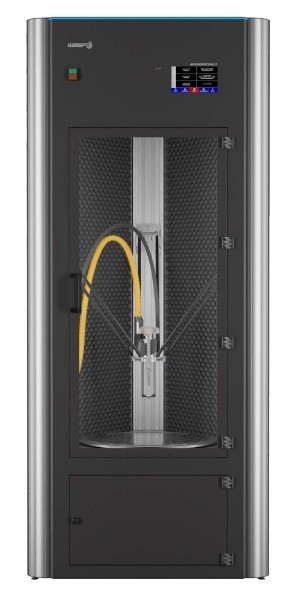
Credit: 3dwasp.com
The WASP 4070 HDP is an industrial 3D printer, designed to print directly from plastic pellets, or granules. The pellet printing technology is up to 10 times cheaper than printing with conventional filaments; it also allows printing with recyclable plastics and speeds up the printing process. The WASP 4070 HDP features a large print volume of Ø 400 x h 600 mm and the layer resolution of 200–500 microns. The printer is equipped with a pneumatically loaded High Definition Pellet extruder with 1 mm nozzle diameter, designed specifically for printing standard, technical, and recycled thermoplastic pellets. The maximum hotend temperature of 280 °C, the heated up to 120 °C print bed and the insulated build chamber, maintaining the temperature of 50 °C provide compatibility with a number of pellets having different properties, namely PLA (100% RECYCLED), ASA (UV resistance), ABS (high mechanical resistance), and TPU (flexible).
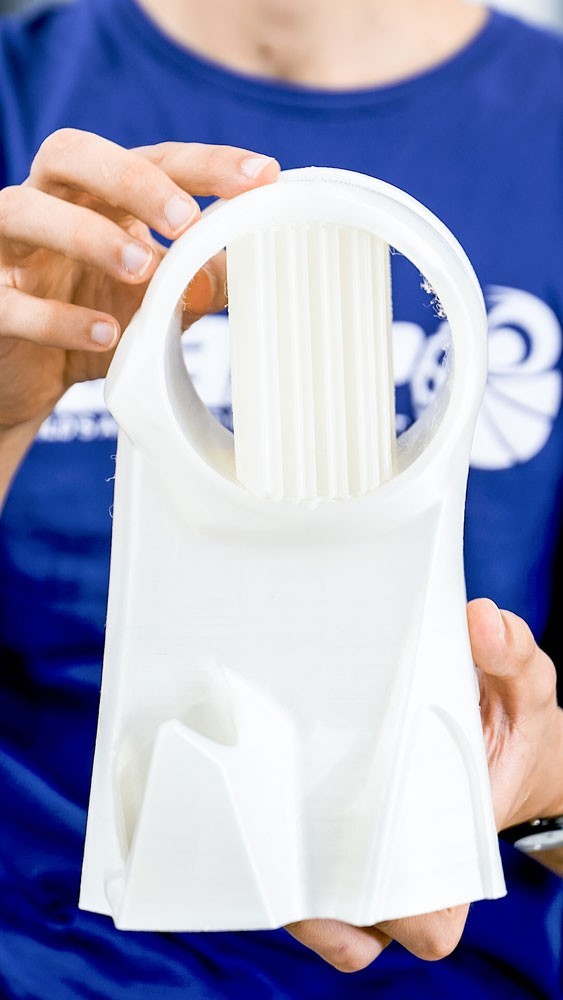
Credit: 3dwasp.com
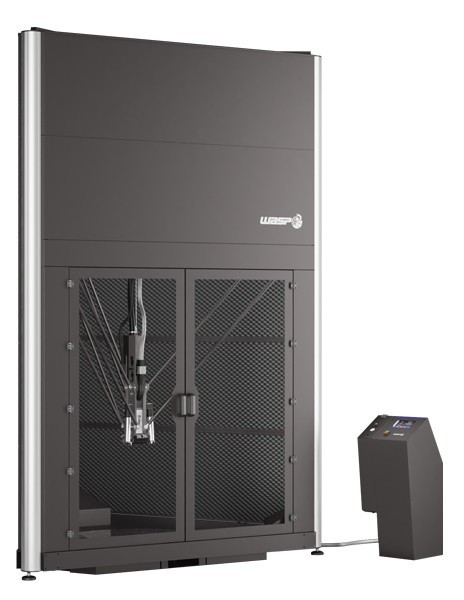
Credit: 3dwasp.com
The WASP 3MT HDP is another industrial 3D printer based on pellet technology with an impressive build volume of Ø 1000 x h 1000 mm. One of its most distinctive features is the proprietary FIRECAP technology, which is a moving hot chamber system that exploits all the heat and introduces it only in the highest layers, ensuring optimal adhesion and smooth surface finish, while reducing energy consumption. The device is equipped with a WASP HDP XL extruder with a standard nozzle diameter of 3 mm, which can be replaced with 2 or 5 mm nozzles if needed; the maximum hotend temperature is 350 °C. The 3MT HDP is compatible with WASP PLA and ABS pellets; it also supports printing with other manufacturers’ 100% recycled PLA, PET, PLA wood, ASA, and PLASMIX. The WASP 3MT HDP is a perfect machine for creating art installations, furniture and interior design objects, as well as for other industries, requiring fast reliable printing of massive parts.
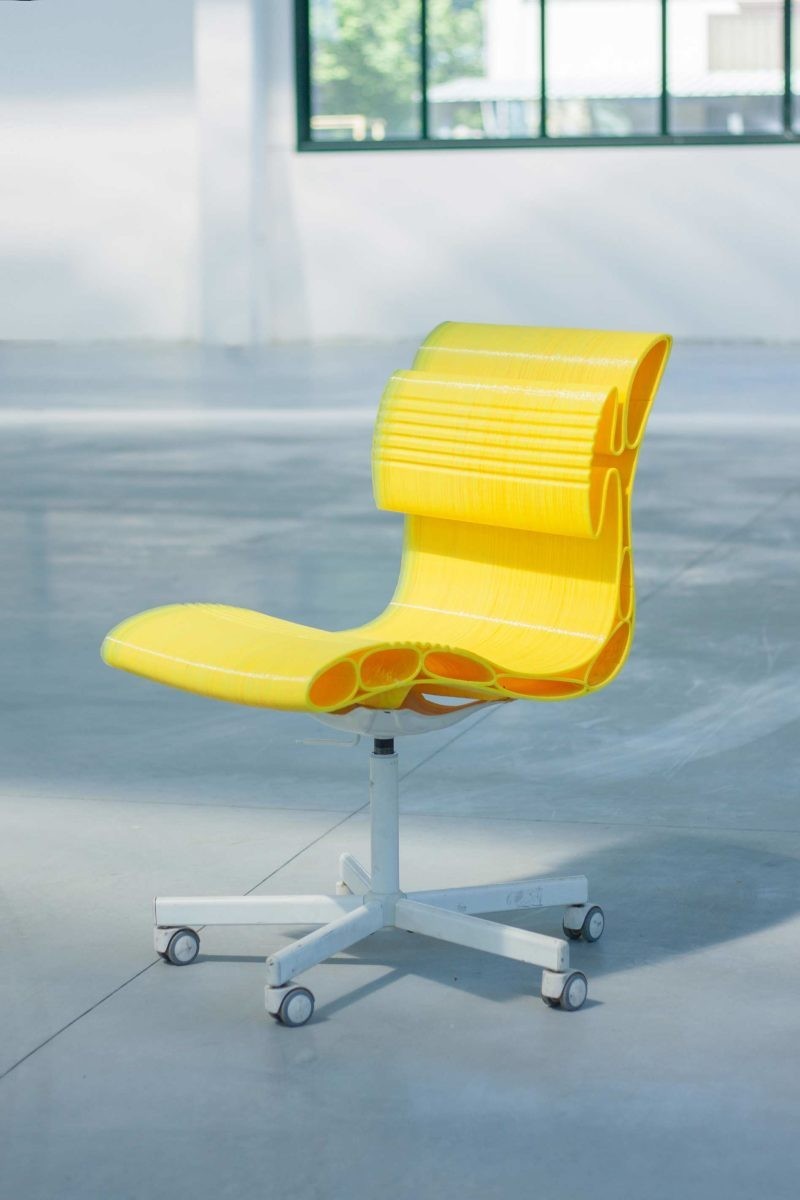
Credit: 3dwasp.com

Credit: 3dwasp.com
Another type of uncommon printing material is ceramics. Ceramic materials are normally more difficult to print than plastic filaments, as they are much more subject to deformation. The Delta WASP 2040 Clay deals with the problem in quite an effective manner. The compact professional 3D printer, designed specifically to work with various types of ceramic materials, is capable of producing detailed high-quality models with surprisingly nice surface finish. The device features a pretty spacious build volume of Ø 200 x h 400 mm and an open design, allowing for easy access to the part during printing. It is equipped with an LDM WASP Extruder with 1.2 mm nozzle diameter, and can print with a variety of ceramic mixtures, including clay, porcelain, gres, earthenware, and others. The Delta WASP 2040 Clay features a resurrection function that resumes printing in case of sudden power outage. Moreover, the Free Zeta system allows you to restart printing from the specified height, if something went wrong.

Credit: 3dwasp.com
To sum it up, we can say that the number and variety of professional 3D printers in the market is literally endless. The user can find industrial-grade models of almost any size, price and functionality; all the most popular additive manufacturing technologies are presented by professional devices. And so as not to get lost in the diversity, you should clearly realize what you are going to get by purchasing a 3D printer. Once you define your requirements, you’ll find the best model answering all your needs in this article.
Update your browser to view this website correctly. Update my browser now
Write a comment